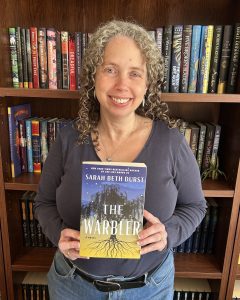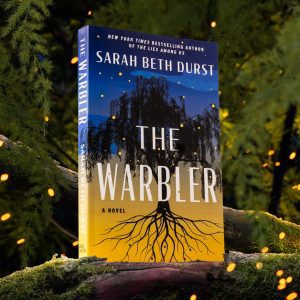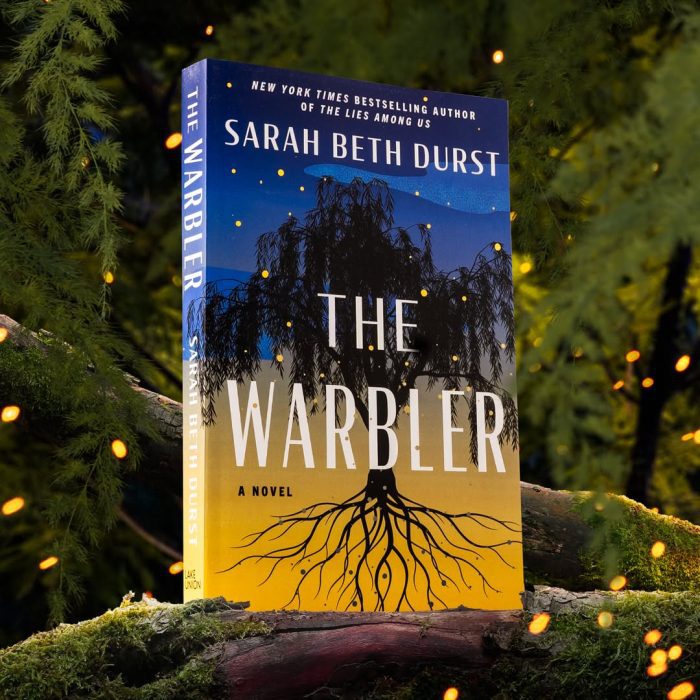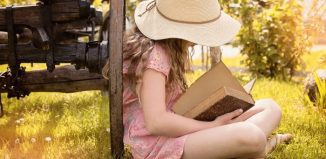Book Review: ‘The Warbler’ embraces the healing power of self-reflection
Reviewed by Jeffrey Sanzel
“My mother is a willow. She stands by a stream that burbles like a toddler’s kisses, and her leaves dip into the water whenever the wind blows …” So opens the gifted Sarah Beth Durst’s latest novel, The Warbler.

“If I stay, then one day, beneath the watchful blue sky, I too will grow roots, my skin will harden to bark, and the strands of my hair will blossom.” Elisa’s curse—what her mother called “our family inheritance”—condemns the family’s women to become trees if they remain in any place for too long.
“I’m packed before I’m ready to leave.” This statement embodies the nomadic Elisa, The Warbler’s central figure. She is never going to but “coming from.” Living under different names, she has taken on Beatrix, Wanda, Gitana, and Barbara, all of which mean “traveler” or “stranger.” Elisa’s quest is threefold: find her familial origins, understand her inability never to remain, and how to break the curse. The sole clue is the location must possess enough “unexplained oddities.”
Until her mother Lori’s passing two years before, mother and daughter crisscrossed the United States, visiting strange and out-of-the-way towns.
As the book opens, Elisa leaves Tyler, with whom she has lived for ten months. She lived in the “now, now, now.” But her life is governed by strong tenets: “Don’t form ties. Don’t take mementos. Don’t keep in touch.” Elisa must always run. A particularly poignant memory is Elisa reflecting on a gift to her mother: a novelty pillow. But the simple offering was left behind because it tied them to that place. Elisa desires something as simple as a junk drawer or a jar of peanut butter “that I don’t have to ration.”
Elisa lands in Greenborough, Massachusetts (The verdant name hints at the possibility of answers to a nature-based enchantment.) Drawn by a cat in the window, her first stop is The Book Cellar, “overflowing with books, exactly as a bookstore should be. Every shelf is stuffed, with volumes wedged horizontally on top of vertical rows and crammed between the top shelf and the ceiling, so many that they look as if they have been quietly breeding for years.”
Elisa is drawn to books because “they’re portable and replaceable.” Owen, the shop’s proprietor, befriends her. She immediately applies and is given a job in the store. But quickly, the town’s nature reveals itself when she witnesses a strange accident and its peculiar aftermath.

The town’s charming surface belies a roiling strangeness beneath its seemingly bucolic surface. Greenborough’s inhabitants include a musician who plays a stringless guitar, a writer whose fingers never touch the keys, a waiter who is perpetually wiping a dessert carousel, and a woman who keeps dozens of birds caged in her yard. Even the most benign statement can be ominous: “You know, I’ve lost track of when I came here. Guess time flies when you’re having fun.” The driving force of the peculiar but well-drawn cast of characters is a nameless trio of elderly sisters who suggest the fates in their many forms.
Ultimately, The Warbler chronicles three generations: grandmother Rose, daughter Lori, and granddaughter Elisa. The book’s chapters alternate in three timelines, exploring the women’s lives and challenges. What seems, at first, a traditional fantasy grows into a complex and emotional narrative. Durst addresses the power of choice and the spirit (and danger) of wishing. Of her many works, Durst’s The Warbler is probably her most visceral and raw, compelling in Elisa’s passion to find truth but also a sense of self.
Having been condemned to wander, the idea of home burns deeply. Elisa is one of Durst’s finest creations, an individual struggling with loneliness and looking for a sense of the whole. “I love music. It’s something that’s actually supposed to be ephemeral. You experience it, then move on, carrying it only as an imperfect memory of how it made you feel. It’s one of the few things that I can experience exactly like everyone else.” Glimpses of her various “lives” help create a wholeness as Elisa puts the pieces together.
Once again, Durst celebrates nature in its beauty and mystery. The metaphor of roots plays as a grounding but equally as a trap. Each woman yearned for a different life, but their choices or those around them failed to complete them. The novel’s resolution shows depth and insight into the fragility of human nature.
In previous novels, Durst demonstrated her skill as a world-builder with fantastical and wholly original universes. She inverts this idea with The Warbler, constructing her story in the very real, recognizable here-and-now. While no less effective, the immediacy becomes a driving force. Durst addresses the idea of home, the struggle between living free and being caged.
In turns sinister and heartfelt, The Warbler is a tale of bravery in facing supernatural and wholly human adversity, looking beyond the shadow of danger, and embracing the healing power of self-reflection and understanding.
—————————————-
Sarah Beth Durst is the New York Times and USA Today bestselling author of over twenty-five books for adults, teens, and kids. She lives in Stony Brook with her husband, her children, and her ill-mannered cat. Pick up a copy of The Warbler at your local bookseller or online at www.amazon.com or www.barnesandnoble.com. For more information, visit sarahbethdurst.com.







